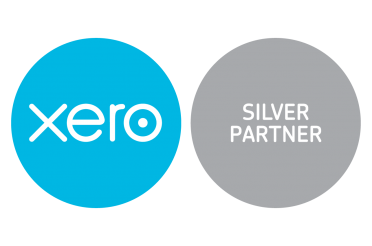 Without a routine of checkups, your business’ financial records will drift away from accuracy and paint the wrong picture, hampering your ability to learn and adapt your business’ design. But following a series of simple steps will keep your finances in check and fuel your decisions with the right insights.
Without a routine of checkups, your business’ financial records will drift away from accuracy and paint the wrong picture, hampering your ability to learn and adapt your business’ design. But following a series of simple steps will keep your finances in check and fuel your decisions with the right insights.
How Frequently Should I be Running Checks on my Business’ Finances?
The frequency of checks will vary from business to business, but here are some guiding principles:
A typical business should perform a basic check at least monthly for two reasons: (a) You should be evaluating business performance monthly and you don’t want to be drawing conclusions from bad numbers, plus (b) It’s much easier to catch and correct errors when memory is fresh, rather than months later when recollections are fuzzy.
A full look at your finances is absolutely critical at year-end. This: (a) Gets things right before the books are locked down as you turn the page into the new year, and (b) Makes sure figures are properly presented for tax purposes so you don’t needlessly pay more tax than required due to simple bookkeeping errors.
Occasionally it can make sense to perform certain routines weekly. This could apply if you have: (a) a low volume of transactions and just want to incorporate it into your weekly finance habits, (b) a high volume of transactions and it’s easier to knock it out in weekly batches, or (c) specialized reporting requirements internally (e.g., making sure weekly costs are allocated to customer jobs) or externally (e.g., properly categorizing sales or spending for government contract purposes).
Taking a few minutes to think through your business’ needs and intentionally choosing a cycle means that you’re not going to keep playing cat-and-mouse with errors in your records and giving you a leg up in directing your business.
What Should be Checked on a Monthly Basis?
Of course, the next question is what to do during each of those checkup cycles? Having a simple checklist to tick through ensures you cover what you need to, without running in circles and/or missing something. Here’s a good monthly checklist your business can apply:
- Scan through transaction classifications for accuracy. This can easily be accomplished in Xero by customizing an Account Transaction report to list all of last month’s transactions by category — You just run the report, then quickly scan down the list looking for items that look out of place. (You’d be surprised how little things here and there will sneak into the wrong spot throwing off your performance analysis.)
- Confirm bank and credit card balances against statements. This also takes just a moment in Xero — Simply run the Reconciliation Report, choose the right ending date, and confirm the Statement Balance in Xero equals the ending balance on the bank/credit card statement. Normally it does and you can move on, but if it doesn’t you’ll want to identify the difference otherwise it means figures are either duplicated or all together missing.
- Review unpaid customer invoices. In Xero, go to Reports > Accounts Receivable Aging, and chose last month’s end date. Now scan through verifying the open invoices make sense and none are getting too old (possibly prompting some followup). Stale or inaccurate invoices have a way of messing up your sales trend analysis and depending on your tax basis, could lead to paying unnecessary taxes.
- Review unpaid supplier bills. Similar to customer invoices, go to Reports > Accounts Payable Aging and chose last month’s date. Scan through again to ensure things look right. Bills can get in there twice resulting in double-payments, improperly matched bill payments can make it look like you owe more than you really do, and of course old unpaid bills may mean you’re unknowingly damaging supplier relationships.
- Confirm all statements and receipts are saved in your records. Using a digital financial records system like Hubdoc makes this step so much easier — you can literally forward receipts from Hubdoc into Xero and then match with transactions, easily ensuring that every transaction is properly backed up by a source document. Not having your receipts means: (a) the IRS will typically deny you the business deduction and assess additional tax plus interest, (b) you’re not going to remember exactly what you bought/ how much it was when you go to buy it again or evaluate purchasing something else, (c) you won’t be able to easily challenge supplier errors, and more.
Checks to Perform at Year-end
Doing a monthly check makes a huge difference at year-end because you’re not scrambling to make up for a year’s worth of corrections. So in December/ January it’s more of putting icing on the cake by completing the following steps:
- Make sure you’ve fully reimbursed yourself for costs incurred during the year. Most small business are ‘cash basis’, which means you deduct costs only once they’re actually paid. If you’re a S-corp, C-corp, or Partnership, that means you’ll typically want to ACH or cut a check to yourself before December 31 for any business costs paid from personal funds, otherwise you’ll have to wait a whole year to claim that deduction, plus you’ll be throwing off the financial performance analysis since the numbers are incomplete. Examples include business mileage, mixed business/personal costs paid from personal accounts, home office costs properly setup, etc.
- Be sure physical checks or other payments initiated before year-end are properly dated. This is especially critical if you rely on automated bank feeds to record expenses — this means that a cost will get recorded once it clears the bank, not when it was actually paid. Lookup the number for the last check written in the year and for any that haven’t cleared by December 31, then create a Spend Money transaction in Xero with the proper date (this can then be matched to the bank feed transaction once it clears).
- Confirm your loan balances. You’ve been recording installment loan payments throughout the year allocating interest and principal properly, but year-end is a great time to confirm both you and the lender are on the same page. This both: (a) Makes sure you claim the full amount of interest expense you’re entitled to, plus (b) gives you the opportunity to correct the lender for any balance disagreement before years go by and it’s too late. In Xero, go to Reports > Balance Sheet, look in the Long-term Liabilities section and compare it to lender statements as of the end of the year.
- Evaluate your pre-paids and accruals. For those with more sophisticated accounting records, you may have balances for things like pre-paid business insurance or expense accruals for things like purchases made before year-end for which a bill hasn’t yet been received. In Xero, go to Reports > Balance Sheet, look in the Current Asset and Current Liability sections for pre-paids/accruals, and evaluate their accuracy. Also critical is to ask whether something isn’t there but should be. Without doing this step, you could be mis-stating your business expenses on the accrual basis and throwing off knowing how your business is performing year-over-year.
- Double-check asset purchases, disposals, and depreciation balances look right. You’ve likely added and gotten rid of equipment, furniture, and other assets over the course of the year. Go to Reports > Balance Sheet in Xero, and look in the Fixed Assets section: Are there any big asset purchases that aren’t showing here? Are old assets hanging around potentially costing you in unnecessary business personal property taxes? Has depreciation been booked for this year? If not, now’s the time to get things trued up.
- Lock your books. Nothing is worse than having a fluid set of books because prior year numbers accidentally or intentionally get edited. We’ve seen this cause big problems under audit, tax returns that don’t properly agree year-to-year, or even just internal performance numbers moving resulting in a lot of head-scratching and lost time chasing down changes. Once you’ve finished reviewing everything and are ready to hand them on to your financial advisor, go to Accounting > Advanced > Financial Settings in Xero, then set the Lock Dates to the year-end.
Intelligently Steering Your Business’ Path
Intelligently steering your business’ path rests on knowing how it’s actually performing. And knowing how it’s actually performing is the combination of two systems: (a) a day-to-day recording system, and (b) a regular cycle of checkups.
Technology tools can automate and simplify these to fairly easy, but failing to intentionally establish these workflows means you’re left navigating from a financial haze, missing important insights you need to see plus costing yourself money from missed opportunities and bookkeeping errors.
Hopefully the above tips have been helpful to you, and to have our Design Team help you setup or shore up your business’ custom workflows, just reach on out.







